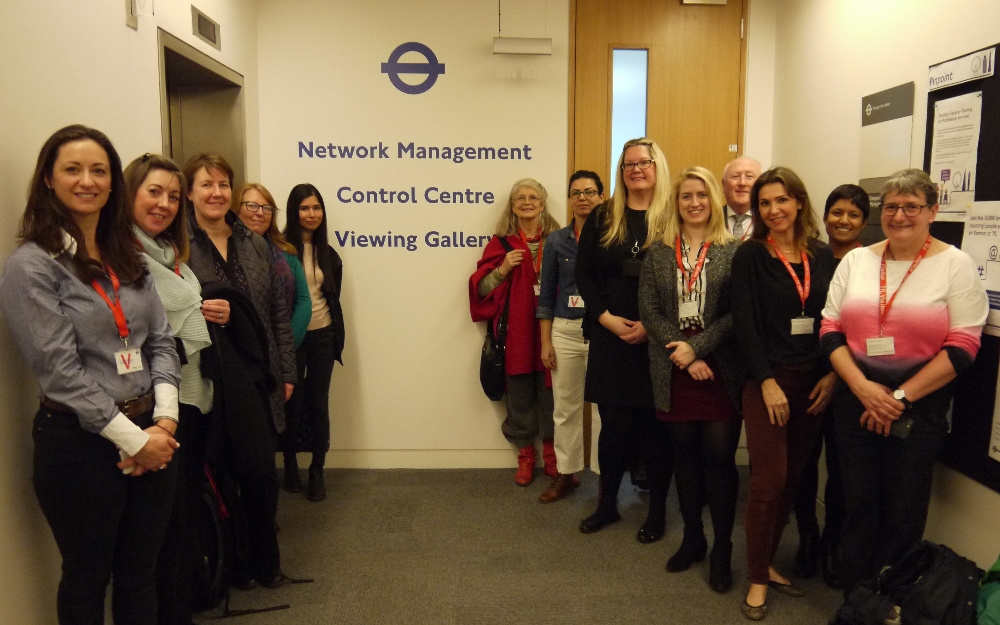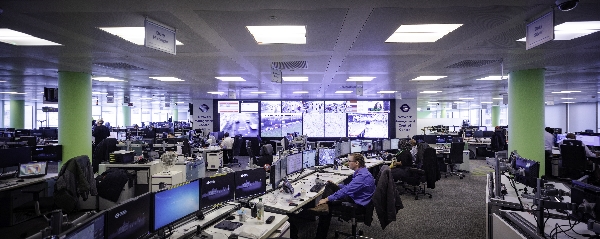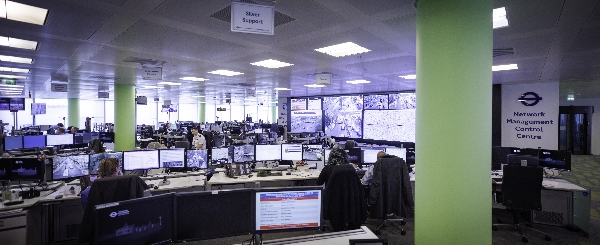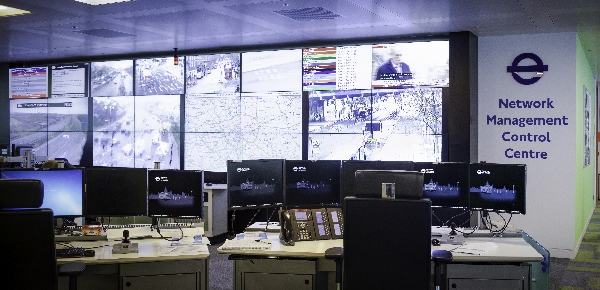By Sonya Veerasamy
A group of members gained a fascinating insight into what it takes to keep London's traffic and people moving when they were invited to the viewing gallery of Transport for London's (TfL) Network Management Control Centre (NMCC).
From this privileged vantage point, right next to the control room floor, our hosts, Natasha Dimelow, Business Logistics Co-ordinator, and Kirsty Sherwood, Senior Network Manager (and Women in Transport board member), gave us a real insight into what's involved in this impressive 24/7, 365 day operation.
They explained how real time incidents within the M25 road network are monitored and managed. These can range from broken down vehicles and collisions to demonstrations and sporting events. The roads monitored go beyond those managed by TfL to ensure there is a cohesive approach across London. 12 tunnels and the London bus network are also included.
The NMCC has recently undergone a transformation programme to ensure that multi-disciplinary teams are working together to keep London safe, responding to up to 1,200 calls per day across the network. For example, members of the Met Police are sited in the NMCC enabling rapid, co-ordinated action and a direct link to their systems and teams when needed.
Data plays a vital role in the work of the NMCC. Various tools are deployed to manage the network including TIMS (Traffic Information Management System), CCTV, VMS (Variable Message Signs) and UTC (Urban Traffic Control), Waze and social media.
The TIMS is used by the team to log incidents and provide real-time traffic information and is linked to the TfL website, local boroughs, sat navs, like TomTom, Google, BBC News and various other stakeholders who also use this information. Network Management Public Information Co-ordinators manage the @TfLTrafficNews and @TfLBusAlerts Twitter feeds 24/7 to provide real-time information and respond to messages. With over 1.4million followers on traffic news and over 300,000 on bus alerts, there is a huge responsibility on the team to ensure information is accurate and up to date.
The NMCC has access to 6,000 cameras, around 1,100 of which it owns. However, the human element cannot be overlooked and on the network, at any one time, there are 8,000 buses with drivers reporting various incidents where NMCC will then provide advice, emergency response – if needed – and reassurance to staff.
On the day of our visit, the NMCC was relatively relaxed but Natasha and Kirsty explained how, with a major incident, like the Westminster terror attack, the atmosphere transforms as Command and Control protocols and training automatically kick in. After every incident, the team debriefs and undertakes a lessons learned exercise.
Natasha clearly loves both her job and London. She started her career as a bus driver then a prison custody officer, transporting prisoners around Kent and London, before joining what was then known as the London Traffic Control Centre in 2006. Over nearly 13 years, she has taken on various roles in the Control Room and has seen the team grow from less than 40 to over 150. Natasha spoke honestly about the resilience needed to deal with the many different challenges on the network occurring on a daily basis and the fatalities and traumatic incidents the teams witness. But she also shared some of the lighter moments, such as the amazing atmosphere during the 2012 Olympics and watching Skyfall being filmed on Whitehall.
Whilst the NMCC is a single, integrated control centre responsible for the planning and management of all incidents and events on the TfL road network, Kirsty is part of the 60-strong network management team that sets the overall strategy for London’s road network. She provided an insight into the fine balancing act of keeping all users moving as safely and smoothly as possible.
A recent Guardian feature on Cat Evans, a Network Manager at TfL, talks about how the NMCC and the network management team work together in a ‘typical’ week.
Extensive modelling and consultation ensures that the right decision is made in the context of the whole network. Some projects can be implemented very quickly while others, like the Baker Street two-way project which recently went live, can take years and some never happen, for one reason or another.
TfL manages 3,600 sets of traffic lights across London. The NMCC can implement temporary traffic light plans to ease congestion, but only when absolutely necessary, in response to specific events.
It was particularly interesting to hear how the Mayor’s focus on healthy streets has increased collaboration with organisations supporting active travel, like Sustrans and Living Streets. As a result the strategy and planning of the network is not just about the movement of vehicular traffic but also considers the needs of all road users, encompassing pedestrians, pedal cyclists and public transport users. The needs of freight and construction are met through careful co-ordination with relevant stakeholders and promoting collaboration across developers.
From our extensive Q&A session with Natasha and Kirsty, it was clear that TfL is operating an agile operation that embraces innovation, continuous improvement and emerging technology.
Here are some comments from our members:
“I appreciated the excellent quality of the hosts, the extent of the information shared and their willingness to answer questions.”
“It was a real treat to have access to the TfL control centre and meet the people who work there.”
“ Natasha and Kirsty were clearly very passionate about what they do and were very open to answering questions.”
“Really enjoyed Natasha's style and honesty. It was great to hear from Kirsty too and the way that the team collaborates.”
“It was excellent to have the opportunity to question someone who is part of the team and really knows how it works in action.”
Our thanks to TfL for opening up this fantastic opportunity to our members and to Kirsty and Natasha for their time. Hats off to the incredible women and men within the NMCC who keep London moving safely and demonstrate incredible resilience and dedication to keep us safe.
Membership of Women in Transport provides exclusive access to a full programme of events including behind-the-scenes site tours like this for less than £5 a month.
Follow us @transportwm or on Linkedin Women in Transport for events, news and updates.




